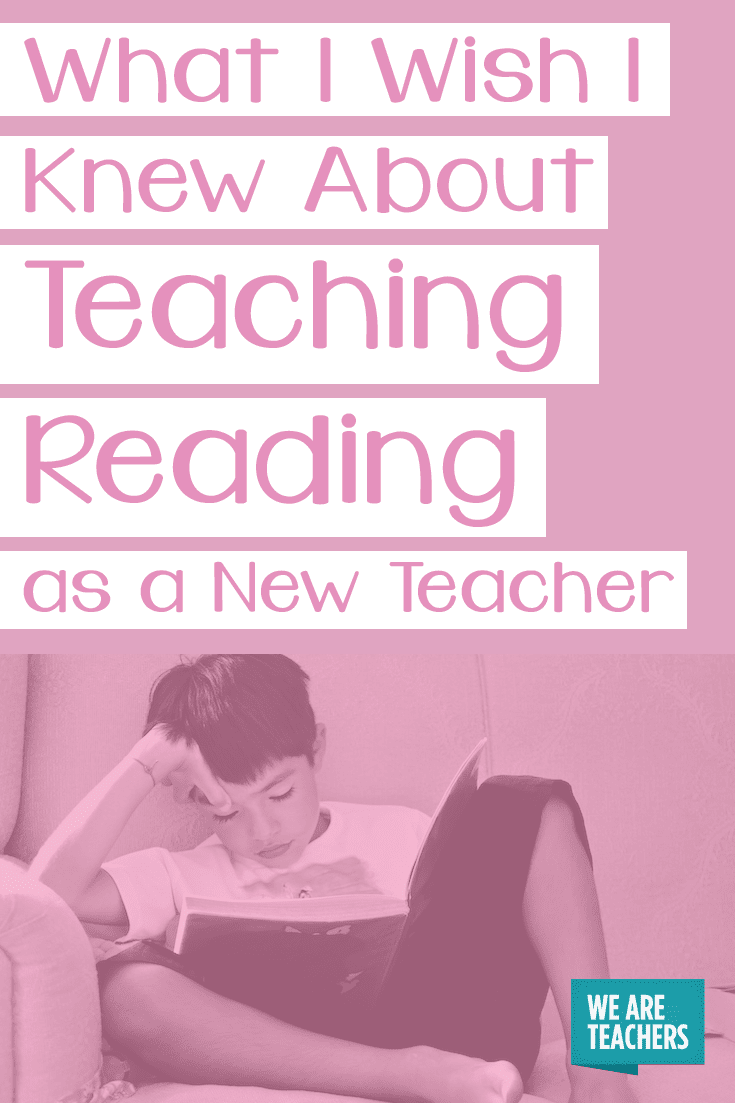The new-teacher learning curve is a steep one, especially as the day-to-day life of teaching has so many routines and moving parts. On the other hand, learning to teach reading, and supporting struggling readers in particular, is a gradual process.
I went into teaching knowing only a small fraction of what I know now about reading instruction. Every year on the job has given me more experience and insight.
While I do believe that learning to teach reading is a marathon and not a sprint, here are a few key truths that would have helped me all those years ago.
1. Students struggle with reading in different ways.
We frequently lump struggling readers together into one group. The reality is that struggling readers are like cornflakes: there are thousands of them and no two are exactly the same.
Some students struggle with decoding, where breaking apart each word into individual sounds is painful and slow. Other students read too fast, guessing at words based on context and attending to only the first letter. Then there is my favorite: the students who easily lose track of where they are on the page and staunchly refuse to use their finger or any other tracking supports.
Students with fluency challenges circle back to repeat words and phrases, don’t stop for punctuation, and never sound like they truly understand what they are reading.
Finally, there are the students who read aloud beautifully and decode with ease, but struggle to comprehend what they read. These students tend to pop up in later grades when the instructional focus switches from decoding to comprehension.
As if these challenges weren’t enough on their own, most low readers have a combination of the struggles above. Consider the students who are both poor trackers and weak decoders or students who struggle with decoding so significantly that their fluency and comprehension are impaired.
2. Students struggle with reading for different reasons.
Another lesson I’ve learned from my experience working with struggling readers is that it is just as important to identify why students are struggling as it is to identify how they are struggling. Knowing the root cause of low reading skills makes teachers more effective at addressing those deficits directly.
Take, for example, the student who is always losing their place as they read. Using a finger or index card to help with tracking is a great strategy and often my first go-to suggestion for students with this challenge.
However, experience has taught me that tracking issues can have a few different root causes, including eyesight challenges or learning differences like dyslexia. Alternately, students can simply resist using their finger to track because they don’t want to be seen as babyish, even if it would help a them great deal.
Knowing if the cause is emotional (resistance to tracking), physical (eyesight challenges) or neurological (dyslexia) doesn’t mean that you’ll stop recommending strategies like tracking with a finger. But uncovering the origins of tracking struggles means you can put other meaningful supports in place that address the root causes directly.
3. Dyslexia looks different for different kids, but has one key sign.
I received only a very brief primer on dyslexia in my childhood education program. Then I found myself teaching at least two or more dyslexic students in my classroom each year.
Turns out, dyslexia is complex and can present differently in students. But the key feature is a difficulty processing and manipulating sounds while reading. This means that decoding and spelling are the main ways students with dyslexia struggle. Since it exists on a continuum, some children present early with severe dyslexia. Others have such subtle challenges that they aren’t diagnosed until the later grades.
This TED Ed video is my go-to resource for explaining what dyslexia is (and isn’t). [embedyt] https://www.youtube.com/watch?v=zafiGBrFkRM[/embedyt]
4. Intervention should be early and often.
Everyone has heard a story of a struggling reader for whom reading “clicked,” seemingly overnight. This, sadly, is not how most students typically overcome their reading struggles.
Low readers need intervention as soon as possible and with as much frequency as possible. Science teaches us that frequency, along with multisensory inputs, allows for students to build their neural pathways.
Check out other articles for additional science-based learning strategies and ideas for improving fluency, so you can begin working effectively with your struggling readers right away.
Want to talk more about supporting struggling readers? Visit our WeAreTeachers HELPLINE group on Facebook to connect with other teachers.


